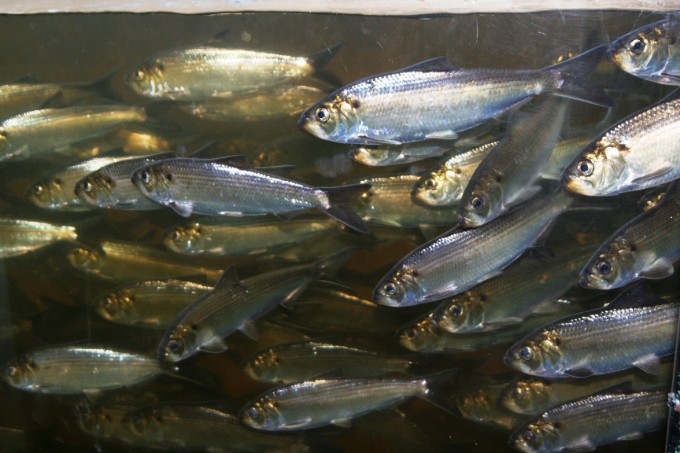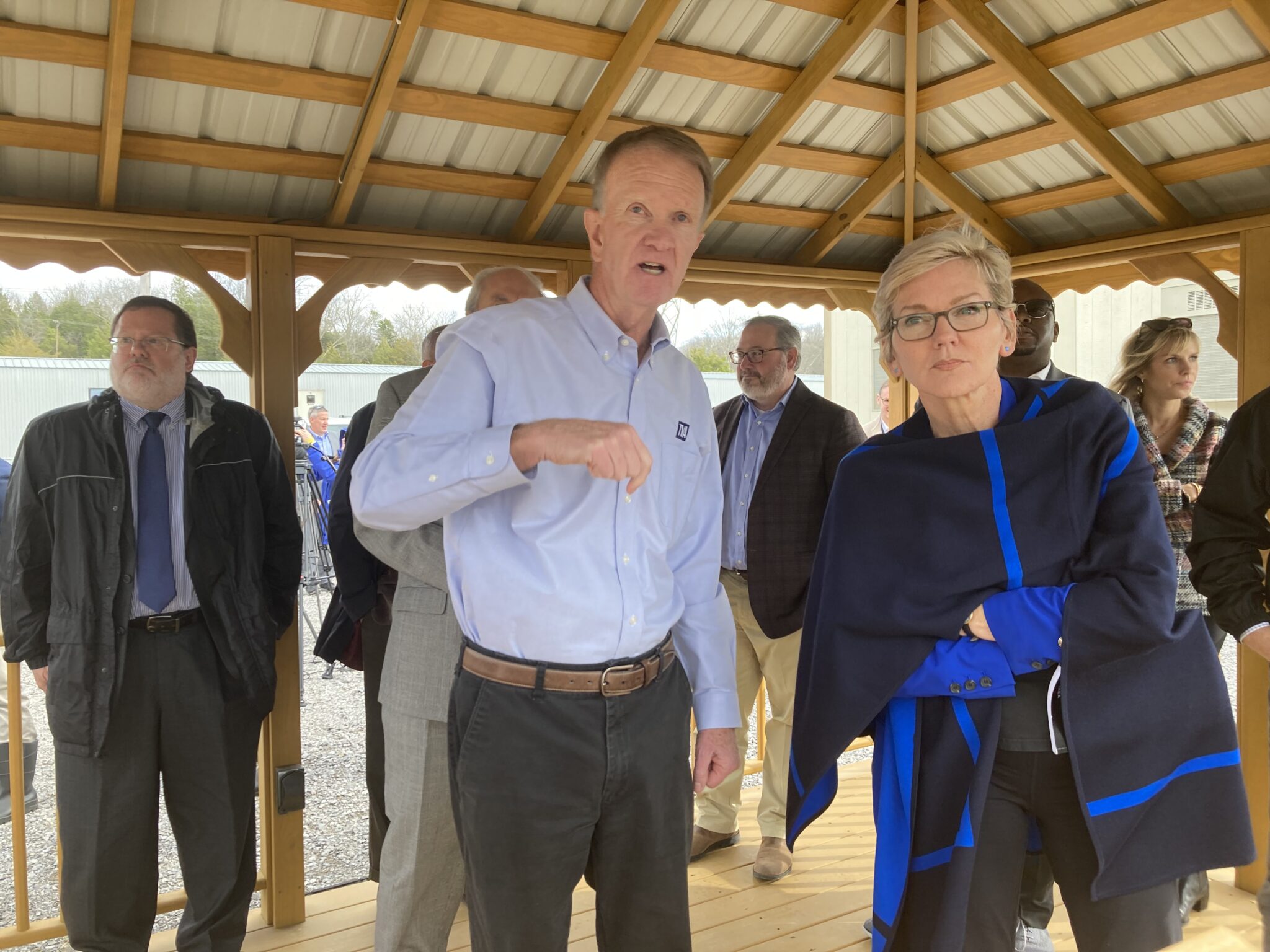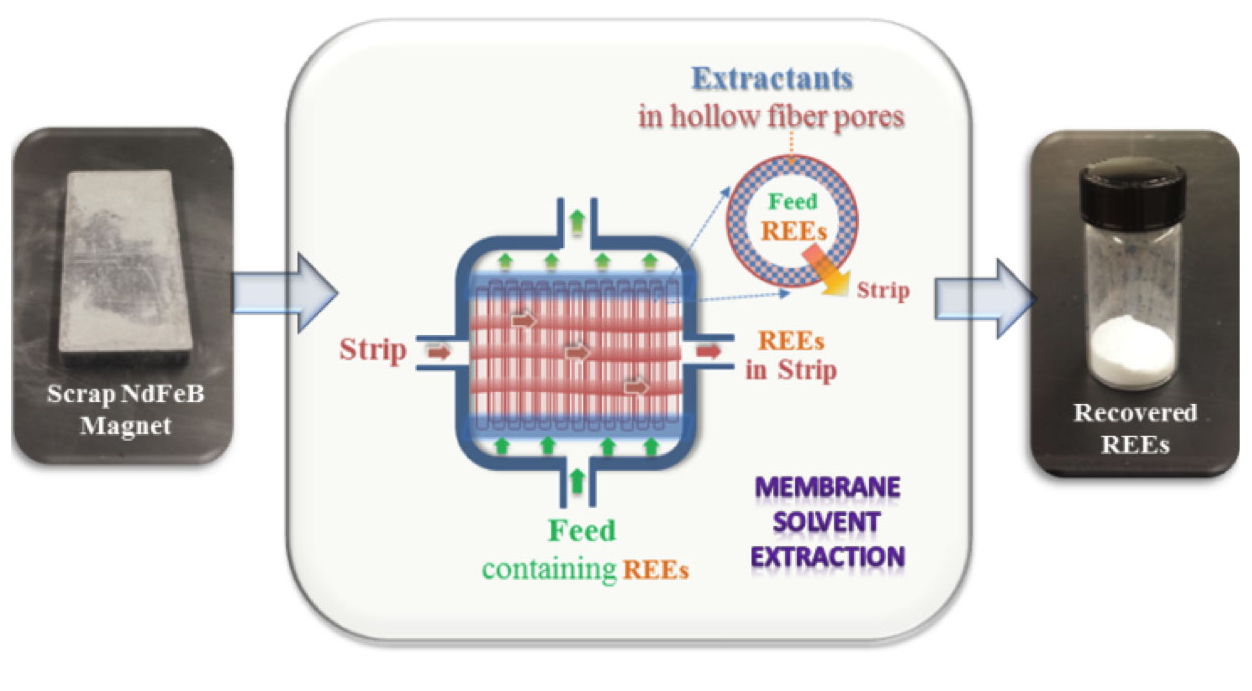News (799)
Children categories
ES! Initiatives (74)
EarthSolidarity!™ Initiatives are endeavors to which anyone can contribute in deed as well as in spirit, that
- minimize waste and environmental impacts
- increase community resilience
- respect and protect ecosystem processes and all forms of life
- contribute to good living conditions for everyone around the globe
- affirm and celebrate our interdependence and interrelatedness in the Web of Life!
Visit the Arctic at Tennessee Aquarium in Chattanooga. While you still can.
Written by Doug Strickland Polar bears on Wrangel Island, Russia. As the sea ice melts each summer, more than 1,000 bears come to Wrangel to wait for the return of the sea ice. It's the largest concentration of polar bears on Earth. BBC Studios via Tennessee Aquarium
Polar bears on Wrangel Island, Russia. As the sea ice melts each summer, more than 1,000 bears come to Wrangel to wait for the return of the sea ice. It's the largest concentration of polar bears on Earth. BBC Studios via Tennessee Aquarium
Learn how the Arctic still thrives in the face of existential climate threats in new IMAX film
Doug Strickland is a writer for the Tennessee Aquarium.
CHATTANOOGA — At first glance, the Arctic seems an impossibly inhospitable place, a frigid wasteland of extremes in which nothing can survive.
Only one-quarter of this vast polar region at the top of the world is made up of land. The rest is comprised of a glacially cold ocean capped by vast stretches of ice.
Despite its harsh conditions, life has found a way to endure — and even thrive — in the Arctic. Audiences will meet just a few of the Arctic’s charismatic residents on Jan. 11, 2024 when the Tennessee Aquarium IMAX 3D Theater debuts a new giant-screen film, Arctic 3D: Our Frozen Planet.
Fish are featured this month at Conservation on Tap
 Barrens topminnow (Fundulus julisia) at Conservation Fisheries, a native stream fish breeding center. This species is endangered (IUCN). It is only found in the Barrens Plateau in Middle Tennessee, making it one of the rarest fish in eastern North America. © Joel Sartore 2023
Barrens topminnow (Fundulus julisia) at Conservation Fisheries, a native stream fish breeding center. This species is endangered (IUCN). It is only found in the Barrens Plateau in Middle Tennessee, making it one of the rarest fish in eastern North America. © Joel Sartore 2023
KNOXVILLE — The next round of Conservation on Tap features Conservation Fisheries and its efforts to restore and conserve some of the most diverse fish populations on the planet.
It’s set for 7 p.m. Jan. 10 at Albright Grove Brewing Company, 2924 Sutherland Ave. Proceeds from the event benefit Discover Life in America, a crucial science partner with Great Smoky Mountains National Park.
“Did you know the incredibly diverse Tennessee River harbors over 225 species of fish, including more than 50 species at risk of extinction? Come join staff from Knoxville nonprofit Conservation Fisheries Inc. to learn about CFI's mission to prevent the extinction of rare fish species, and to work for their long-term recovery. We will be discussing some of our successes in fish recovery efforts over the past 37 years, including species found in Great Smoky Mountains National Park.”
Big South Fork NRRA celebrates 50th anniversary

New Year’s Day 2024: Mail Run bike ride
ONEIDA — Big South Fork National River & Recreation Area will commemorate its first 50 years with a year-long celebration in 2024. The park will recognize those who have played a pivotal role in making this special place what it is today.
Big South Fork prepares a year of honoring the past, celebrating today and planning for the future. “The story of Big South Fork is not finished. We are excited to engage with the community as we look forward to the next 50 years,” said Superintendent Niki Stephanie Nicholas.
As the new year approaches, there is a lot in store, from the installation of dozens of brand-new interpretive waysides and information boards — found at trailheads, parking lots and other points of interest throughout the park — to a completely overhauled official park map and guide, special events, ranger-led programs and incredible social media content, just to name a few.
Big South Fork’s 50th anniversary activities start with a celebration at Bandy Creek Visitor Center on Monday, Jan. 1, at 10 a.m., where mountain bikers are invited to ride the annual “Mail Run” event.
This ride is traditionally called the Mail Run because it occurs every year, no matter the weather. Just remember to BYOB (Bring Your Own Bike). The Mail Run consists of a choice of rides from 8-35 miles so bikers can pick the group ride of a length they are most comfortable with. Hot chocolate and coffee will be available at Bandy Creek Visitor Center before the rides start.
TWRA fisheries and crayfish expert retires after four decades of service
Written by Tennessee Wildlife Resources Agency Carl Williams, a TWRA fisheries technician and self-taught crayfish biologist. TWRA
Carl Williams, a TWRA fisheries technician and self-taught crayfish biologist. TWRA
MORRISTOWN — Carl Williams, a Tennessee Wildlife Resources Agency fisheries technician and self-taught crayfish biologist retired after dedicating more than four decades to wildlife and fisheries conservation and management.
Williams began working with TWRA in August 1979 through the Young Adult Conservation Corp (YACC), which was a federally funded program. Initially hired for a one-year assignment, he worked with lands management wildlife biologists on various projects, including white-tailed deer and wild turkey restoration.
The subsequent year marked a shift as he joined TWRA’s Fisheries Division, conducting creel surveys on Cherokee and Douglas reservoirs. In August 1981, he transitioned to the Buffalo Springs Trout Hatchery spending the next seven years propagating and rearing rainbow, brown, brook, lake and Ohrid trout, and distributing them throughout many streams, rivers and reservoirs in East Tennessee.
The Revelator: 10 ways targeted dam removals can help solve the climate change dilemma
Written by Gary Wockner Alewives returned by the millions after the Edwards and Ft. Halifax dams were removed in Maine. John Burrows/ASF via The Revelator
Alewives returned by the millions after the Edwards and Ft. Halifax dams were removed in Maine. John Burrows/ASF via The Revelator
By providing both mitigation and adaption, dam removal can lower greenhouse gas emissions and restore carbon sinks.
This article was originally published in The Revelator. Gary Wockner
As the climate crisis escalates, a huge amount of attention and money is being focused on climate solutions.
These can be divided into two categories: solutions that pursue “mitigation,” which lowers greenhouse gas emissions, and those that pursue methods to adapt to climate impacts to increase human and ecological resiliency.
Dams, of course, create enormous environmental harms, many of which have already been described in scientific literature. Equally well documented is the fact that removing dams can restore seriously damaged ecosystems. But missing from almost every climate-solution story and study is how dam removal can be key for both mitigation and adaptation.
Here are 10 reasons how dam removal fights climate change.
- climate action
- dam removal
- the revelator
- gary wockner
- greenhouse gas emission
- methane emission
- natural flow of the river
- river plume
- carbon sink
- reservoir
- biodiversity
- sediment transport
- fish population dynamic
- water supply
- reservoir evaporation
- climate resilience
- heat island
- forest cooling effect
- river cooling effect
- climate crisis
- lake mead water level
- colorado river water restriction
Meet the salamanders making the South a biodiversity hotspot
Written by Southern Environmental Law CenterSkip to main co An eastern newt in its juvenile stage in Blacksburg, Virginia. Courtesy SELC.
An eastern newt in its juvenile stage in Blacksburg, Virginia. Courtesy SELC.
Salamanders are under siege in a changing world
Salamanders are extraordinary creatures. Some of these astonishing amphibians boast vibrant colors and patterns while two-thirds of all species are lungless and able to breathe through their skin. All salamanders have the remarkable ability to regrow limbs, tails, and even parts of their heart and brain, a rare ability in the animal kingdom.
More salamander species live in the Appalachians than anywhere else in the world. Fifty-four species of salamander call Virginia home.
Roughly 20 percent of the world’s salamander species can be found in the South
Unfortunately, the impacts of climate change, habitat loss and pollution pose a real danger to these sensitive creatures. Increased temperatures, changing humidity levels, wildfires and droughts wreak havoc on salamanders, which are impacted by even small changes in habitat conditions and are often specialized to small native ranges.
Southern Environmental Law Center’s work addressing climate change, fighting for clean water, and conservation efforts help protect all kinds of salamanders in the South. To celebrate the Endangered Species Act’s 50th anniversary, they are highlighting some of the endangered and threatened salamanders of our region.
UPDATED: Are we ready to let a data-driven process change the future of Knox County?
Written by Hellbender PressIt was supposed to be the second meeting of the Growth Policy Coordinating Committee
The meeting was not conducted according to its announcement — as the official meeting of the Knox County Growth Policy Coordinating Committee for the second reading of the plan — but downgraded to a public comment session!
A repeat of the same mistake made with the October meeting, which also was not publicly announced in a newspaper with the minimum 15 days due notice required by state law! Thus, that meeting was held as a “forum for public comments” only.
Knoxville — The Knox County Growth Policy Coordinating Committee (GPCC) will meet on Tuesday, December 19, 2023, at 5:00 p.m. in the Main Assembly Room of the City County Building, 400 Main Street.
The purpose of this meeting is to discuss the proposed amendment to the Growth Policy Plan and hear from members of the public.
Note: Anyone who wishes to sign up to speak, can do so by calling 865-215-2005 by Tuesday, December 19 at 12:00 p.m.
Advance Knox was promoted as a public-participation effort to come up with a 20-year plan for growth in Knox County
Hellbender Press reported regularly on Advance Knox progress. In the end, there remained little public enthusiasm for the plan that resulted after two years.
At the “public information” meeting on Oct. 24 and at the first official GPCC meeting Nov. 27, the vast majority of attending citizens were upset by the Knox County Proposed Future Land Use Map. It showed that 17.5 square miles of land would be moved from ‘Rural’ to ‘Planned Growth.’ It appeared that little, if any consideration has been given to best agricultural soils.
15 years on, Roane County honors victims of 2008 TVA coal ash spill
Written by Anila Yoganathan
Workers with engineering firm responsible for cleanup lacked protective gear for handling toxic agents
This story was originally published by Tennessee Lookout.
KINGSTON — The Roane County Commission this month honored the memory and labor of the workers who cleaned up the Tennessee Valley Authority’s 2008 Kingston coal ash spill by funding a historical marker and approving a proclamation that Dec. 22 will be a day to honor the workers.
This December marks 15 years since the spill. In the early hours of Dec. 22, 2008 at TVA’s Kingston Fossil Plant, 5.4 million cubic yards of coal ash was released, spilling into the Swan Pond Embayment and the Emory River Channel, covering about 300 acres, according to the Environmental Protection Agency.
Coal ash is the concentrated waste left after burning coal. This waste can come in different sized particles from coarse bottom ash with the consistency of sand and gravel to fine dust like particles that compose fly ash. The smaller the particle the more easily these particles can be inhaled or ingested. This waste can contain heavy metals such as mercury, arsenic and cadmium and potentially elements that emit radiation.
Exposure to these elements can potentially cause various health impacts, including cancers.
- kingston ash spill
- kingston coal ash spill
- kingston fossil plant retirement
- kingston coal ash worker
- roane county commission kingston ash spill
- swan pond kingston
- jamie satterfield
- federal coal ash rule
- advocacy and education about coal ash
- remember kingston
- personal protective equipment
- ppe
- dec 22 day of remembrance for coal ash cleanup workers
Dec. 10, 2023 — Universal Declaration of Human Rights’ 75th anniversary
EarthSolidarity!™ is a grassroots appeal by the Foundation for Global Sustainability. It challenges everyone to become active, or even more engaged, in humanity’s exigency to stem the demise of our planet’s life-support systems. The gist of it is summarized in two sentences:
Ask not what Mother Earth can do for you.
Ask what you and those next to you can do to keep our planet inhabitable.
That meme addresses the global polycrisis — with a hat tip to President John F. Kennedy for borrowing the notion from his 1961 inauguration speech. (Then the Cold War was approaching the boiling point of the Cuban missile crisis. And incidentally, human rights had improved little yet for the majority of the world’s population.)
The global polycrisis is brought about by the pernicious entanglement of many systems that keep civilization ticking. Relatively small disturbances in one system may reverberate through other systems. When necessary corrections trigger a self re-enforcing feed-back loop, previously unimagined break downs that affect multiple systems can happen. Recent examples are the disruptions of world supply chains by the COVID-19 pandemic; then again by a single ship stranded in the Suez Canal.
 Inter-system categories. From: ‘What is a Global Polycrisis?’ by the Cascade Institute
Inter-system categories. From: ‘What is a Global Polycrisis?’ by the Cascade Institute
Increases in the frequency and severity of calamities, such as catastrophic floods, hurricanes and tornados, extensive droughts, debilitating heat waves, widespread forest fires, or episodes of abominable air quality often result in disruptions of supply chains, diminished availability of critical services, reduced job security and hikes in cost of living expenses. In less developed areas of the world, water or food shortages may lead to armed conflicts and waves of refugees.
 An example of how climate impacts combine with other shocks to increase cost of living. The baseline shows an average cost without the impact of climate change against two scenarios going forward — current policies and adaptation & mitigation — to indicate the increase in cost of living over time as climate impacts accumulate. As the cost of living increases, the colored dashed lines show the potential for societal tipping points or volatile transitions, from strikes to political instability. (Behrens, P., 2023)
An example of how climate impacts combine with other shocks to increase cost of living. The baseline shows an average cost without the impact of climate change against two scenarios going forward — current policies and adaptation & mitigation — to indicate the increase in cost of living over time as climate impacts accumulate. As the cost of living increases, the colored dashed lines show the potential for societal tipping points or volatile transitions, from strikes to political instability. (Behrens, P., 2023)
How many will have made it from start to finish?
Written by Hellbender Press
2023 Mountain Commerce Challenge is almost finished
Knoxville — Legacy Parks Foundation will wrap up another great year of the Mountain Commerce Challenge on Saturday, December 9 with the 17th Tour de Lights bike ride and celebration. The free and family-friendly holiday bike ride is presented by Visit Knoxville and Bike Walk Knoxville. Riders will meet 4 p.m. at the Outdoor Knoxville Adventure Center to decorate their bikes before heading to Mary Costa Plaza for the festivities.
Meanwhile, spectators and costume contestants will already enjoy themselves at a more leisurely pace at Holiday Market & Expo, which opens 3:30 p.m. on Mary Costa Plaza by the Knoxville Civic Coliseum.
The glamorous 5-mile pedal parade will circle through East Knoxville neighborhoods to culminate coming down Gay Street.
 Courtesy of Bike Walk Knoxville
Courtesy of Bike Walk Knoxville
Those who bring their ‘Challenge Checklist’ showing 75 miles completed will receive a special patch to commemorate all of the great hiking, biking and paddling accomplished this year!
Everyone who registers for the Tour de Lights or the Costume Contest will receive a commemorative T-shirt and be entered for some exciting ‘door prizes.’
Mountain Commerce Challenge
The Mountain Commerce Challenge is named for Mountain Commerce Bank (MCB), which sponsored this challenge for its third year with a $15,000 donation to the Legacy Parks Foundation. The locally-owned community bank was founded 1910 in Erwin, where it acquired the former Erwin National Bank. MCB is 5-star rated by Bauer Financial and nationally ranks among the top 50 community banks.
Community banks are a cornerstone of community economic resilience because they invest customer deposits in the regional economy. That is particularly important for businesses that depend on regional natural resources and a local workforce with extensive experience and a deep understanding of local conditions.
TVA and DOE declare that modular reactors are on the horizon here
Written by Ben Pounds The Tennessee Valley Authority’s Bob Deacy shows U.S. Department of Energy secretary Jennifer Granholm the site of a future nuclear reactor in Oak Ridge. Ben Pounds/Tennessee Lookout
The Tennessee Valley Authority’s Bob Deacy shows U.S. Department of Energy secretary Jennifer Granholm the site of a future nuclear reactor in Oak Ridge. Ben Pounds/Tennessee Lookout
DOE chief: Little nuke plants posited to provide clean energy
This story was originally published by Tennessee Lookout.
OAK RIDGE — U.S. Department of Energy Secretary Jennifer Granholm visited the site of a possible first-of-its-kind nuclear reactor for the Tennessee Valley Authority this week.
The utility’s board authorized $200 million to explore building a reactor on the site last year after the Nuclear Regulatory Commission gave TVA an early site permit in 2019.
This first-of-its-kind small modular reactor would be smaller than standard nuclear reactors and generate less power, but it could have other advantages. While typical nuclear power plants need to provide power at 100 percent of their capacity constantly, a small modular reactor can more easily increase or decrease the amount of power it provides to the overall grid. Melinda Hunter, TVA nuclear communication specialist explained that this flexibility can complement renewable plants elsewhere in the TVA grid.
“When the sun’s not shining, you can bring the power up,” she said, adding that during sunnier periods the small modular reactors can provide less power.
TVA CEO Jeff Lyash said the utility will likely start building its first reactor on the site in 2027 and finish by the early 2030s. TVA is looking to build four of these reactors on the site, but it’s not made a final decision on the first one yet. Each reactor would generate 300 megawatts.
On tap: Learn how the local Sierra Club is fighting climate change
 Harvey Broome hiding in a buckeye tree on the way to Hughes Ridge, July 25, 1931. Albert “Dutch” Roth
Harvey Broome hiding in a buckeye tree on the way to Hughes Ridge, July 25, 1931. Albert “Dutch” Roth
KNOXVILLE — The latest round of Conversation on Tap features members of the local Harvey Broome group of the Sierra Club discussing its efforts to address climate change.
It’s set for 7 p.m. Dec. 13 at Albright Brewing Company, 2924 Sutherland Ave. Proceeds from the event will benefit Discover Life in America, a crucial science partner with Great Smoky Mountains National Park.
Join Harvey Broome group vice-chairman Jerry Thornton and others to learn more about the local chapter of the Sierra Club and its efforts to address climate change.
Named after a Smokies advocate and Wilderness Society founder, the Harvey Broome chapter of the Sierra Club has been fighting to preserve wild places; create clean, safe communities; and encourage recycling and clean energy since 1972.
Photograph from the Albert “Dutch” Ross Photograph Collection at the University of Tennessee Libraries
Albert Gordon "Dutch" Roth, born September 20, 1890 in Knoxville, Tennessee, is recognized as one of the most prolific early photographers of the Great Smoky Mountains' Greenbrier and Mount Le Conte sections. An early member of the Smoky Mountains Hiking Club, his photographs document club hikes and activities, including the construction of the clubhouse at Greenbrier.
What began in 1913 as a diversion soon developed into a serious avocation as Roth perfected his penchant for photography while avidly hiking the unexplored regions near his home. He worked primarily with a Kodak Autographic 122 camera, and, often carrying a heavy tripod, would climb twenty to thirty feet up a tree or venture hundreds of yards off the trail to capture the landscape images for which he was later noted.
ORNL wants to leave watercraft carbon emissions in its wake
 This Caterpillar in-line 6-cylinder marine diesel engine will be the subject of research and development for efficient, more climate-friendly marine propulsion with methanol fuel. Genevieve Martin, ORNL/U.S. Dept. of Energy
This Caterpillar in-line 6-cylinder marine diesel engine will be the subject of research and development for efficient, more climate-friendly marine propulsion with methanol fuel. Genevieve Martin, ORNL/U.S. Dept. of Energy
OAK RIDGE — The Department of Energy’s Oak Ridge National Laboratory and Caterpillar Inc. have entered into a cooperative research and development agreement to investigate methanol as an alternative fuel source for four-stroke internal combustion marine engines. The collaboration supports efforts to decarbonize the marine industry, a hard-to-electrify transportation sector.
As the U.S. continues to seek ways to reduce environmentally harmful greenhouse gas emissions, methanol is an attractive fuel alternative to diesel because it reduces carbon emissions. Methanol also reduces emissions of nitrogen oxides and sulfur oxides. In addition, methanol’s relatively high energy density makes it easier to store on marine vessels than gaseous fuels meaning it can be more easily integrated into overall existing engine design and operation.
TVA’s Bull Run coal plant goes dark in Oak Ridge. More fossils to follow?
Written by Ben Pounds Bull Run Fossil Plant in Anderson County, Tennessee, is officially offline as of Dec. 1, 2023, according to the Tennessee Valley Authority. Abigail Baxter/Hellbender Press
Bull Run Fossil Plant in Anderson County, Tennessee, is officially offline as of Dec. 1, 2023, according to the Tennessee Valley Authority. Abigail Baxter/Hellbender Press
TVA retires coal-fired plant; just four more to go
OAK RIDGE — The Tennessee Valley Authority took another step toward its goal to phase out all its coal plants by 2035.
TVA officially announced Bull Run Fossil Plant, at 1265 Edgemoor Road in Anderson County’s Claxton community, closed on Friday, Dec. 1. The TVA board decided to close the plant four years earlier on Feb. 14, 2019. Now the utility says it plans to retire all of its coal plants by 2035. The utility has cited the environment and efficiency as reasons for closing the plants. TVA plans to create solar and natural gas plants to replace the power formerly generated by coal. TVA has not made final plans for the Bull Run site.
“It’s not an easy decision to retire a plant, but it’s one we must make to secure a reliable and cleaner energy future as our generation portfolio and load shapes change,” Jacinda Woodward, senior vice president of power operations, said in a press release.
Greener solution powers new method for lithium-ion battery recycling
 ORNL researchers Lu Yu and Yaocai Bai examine vials that contain a chemical solution that causes the cobalt and lithium to separate from a spent battery, followed by a second stage when cobalt precipitates in the bottom. Carlos Jones/ORNL/DOE
ORNL researchers Lu Yu and Yaocai Bai examine vials that contain a chemical solution that causes the cobalt and lithium to separate from a spent battery, followed by a second stage when cobalt precipitates in the bottom. Carlos Jones/ORNL/DOE
OAK RIDGE — Used lithium-ion batteries from cell phones, laptops and a growing number of electric vehicles are piling up, but options for recycling them remain limited mostly to burning or chemically dissolving shredded batteries. The current state-of-the-art methods can pose environmental challenges and be difficult to make economical at the industrial scale.
The conventional process recovers few of the battery materials and relies on caustic, inorganic acids and hazardous chemicals that may introduce impurities. It also requires complicated separation and precipitation to recover the critical metals. However, recovering metals such as cobalt and lithium could reduce both pollution and reliance on foreign sources and choked supply chains.
This research is funded as a project of the Advanced Battery Recycling Consortium, or ReCell, a program of the Vehicle Technologies Office within DOE’s Office of Energy Efficiency and Renewable Energy. Lu Yu and Yaocai Bai and researchers Rachid Essehli and Anuj Bisht contributed to the study, which utilized the DOE’s Center for Nanophase Materials Science at ORNL.
— Oak Ridge National Laboratory
More...
TDEC releases money to help rubber meet the road
KNOXVILLE — The Tennessee Department of Environment and Conservation granted $350,197 to the University of Tennessee from the Tire Environmental Act Program.
“We are seeing great advances in repurposing tires for environmental benefits,” said TDEC Deputy Commissioner Greg Young. ”Programs like this not only help clean up sites of used tires, they involve innovative new uses for them. We congratulate UT-Knoxville on this project.”
UTK is partnering with the Tennessee Department of Transportation (TDOT) to install a series of pavement test sections using the technologies developed from this project. Benefits of including rubber in asphalt pavement mixes include improved skid resistance, cracking resistance, and noise reduction.
The purpose of the Tire Environmental Act Program is to select and fund projects that best result in beneficial uses for waste tires. Projects must qualify for one of three categories: tire processing/recycling, tire-derived material use, or research and development. The program provides grant funding to eligible entities, including local governments, non-profit organizations, higher education institutions, K-12 schools and for-profit businesses.
Tennessee established the Tire Environmental Fund in 2015. Upon the first retail sale of a new motor vehicle to be titled and registered in Tennessee, a flat fee based on the number of a vehicle’s wheels is assessed. The fee goes into the fund, which is used for projects creating or supporting beneficial end uses for waste tires.
Since 2015, grantees have been awarded almost $6.8 million, and approximately 5.5 million tires or nearly 58,000 tons of scrap tires have been diverted from landfills. The tires are repurposed for use in rubberized asphalt, tire-derived aggregate, tire-derived fuel, granulated rubber porous flexible pavement, and other beneficial end uses that result in tires being diverted from landfills for a higher and better use.
— Tennessee Department of Environment and Conservation
ORNL separates rare earth from the chaff
 Membrane solvent extraction schematic. ORNL
Membrane solvent extraction schematic. ORNL
OAK RIDGE — Caldera Holding, the owner and developer of Missouri’s Pea Ridge iron mine, has entered a nonexclusive research and development licensing agreement with Oak Ridge National Laboratory to apply a membrane solvent extraction technique, or MSX, developed by ORNL researchers to process mined ores. MSX provides a scalable, efficient way to separate rare earth elements, or REEs, from mixed mineral ores.
The MSX technology was pioneered at ORNL by researchers in the Department of Energy’s Critical Materials Innovation Hub, or CMI, led by Ames National Laboratory. The inventors, Ramesh Bhave and Syed Islam of ORNL’s Chemical Sciences Division are named in 26 inventions and five active licenses related to the recovery of REEs.
South River Watershed Alliance helps save an Atlanta river
Written by Paige R Penland Dr. Jacqueline Echols shows off rehabbed Panola Shoals, a rustic kayak launch site that will be the beginning of South River Water Trail. Paige Penland/Hellbender Press
Dr. Jacqueline Echols shows off rehabbed Panola Shoals, a rustic kayak launch site that will be the beginning of South River Water Trail. Paige Penland/Hellbender Press
After years of activism, Atlanta’s South River is now a font of sustainability and fun
This article has been edited since its original publication.
ATLANTA — It has taken decades, but the once-polluted South River is now approved for fishing and recreation, and 40 navigable miles from Panola Shoals, about 30 minutes southeast of downtown Atlanta, to Lake Jackson, are being developed into the South River Water Trail for canoes and kayaks.
“This has always been an environmental justice issue,” said Dr. Jacqueline Echols, board president of the South River Watershed Alliance (SRWA) and driving force behind the cleanup.
The 60-mile South River begins in the 80-percent Black city of East Point, then runs through other predominately Black, South Atlanta communities and into Arabia Mountain Natural Heritage Area, where the Flat Rock Archives “preserves rural African-American history in Georgia.”
- south river watershed alliance
- garden & gun’s 2023 champion of conservation
- gacd 2023 urban conservationist of the year
- clean water act
- jaqueline echols
- arabia mountain natural heritage area
- flat rock archives
- south river water trail
- american rivers
- georgia conservation voters
- panola shoals
- keisha lance bottoms
- intrenchment creek
- rockdale river trail
- everett park
- environmental justice
Grayson Subaru Selects Ijams Nature Center as Hometown Charity for 2023 Subaru Share the Love Event
 Ijams Nature Preschool students were the first to explore the Ijams Nature Playscape at Grayson Subaru Preserve before it opened to the public in May 2022. Customers who purchase or lease a new Subaru from Grayson Subaru Nov. 6, 2023-Jan. 2, 2024, can choose to have Subaru of America, Inc., donate $250 to Ijams as part of the 2023 Subaru Share the Love Event. Donations will be used to expand this natural play area as well as improve the Mead’s Quarry swim area. Cindy Hassil.
Ijams Nature Preschool students were the first to explore the Ijams Nature Playscape at Grayson Subaru Preserve before it opened to the public in May 2022. Customers who purchase or lease a new Subaru from Grayson Subaru Nov. 6, 2023-Jan. 2, 2024, can choose to have Subaru of America, Inc., donate $250 to Ijams as part of the 2023 Subaru Share the Love Event. Donations will be used to expand this natural play area as well as improve the Mead’s Quarry swim area. Cindy Hassil.
Starting in mid-November, getting a new car from Grayson Subaru could mean new places to play and learn at Ijams Nature Center.
Grayson Subaru has chosen the nonprofit nature center as its hometown charity for Subaru of America, Inc.’s annual Subaru Share the Love Event.

